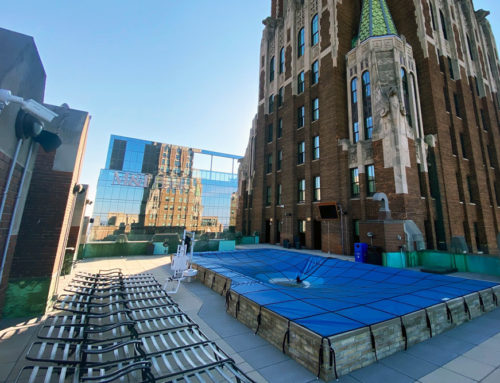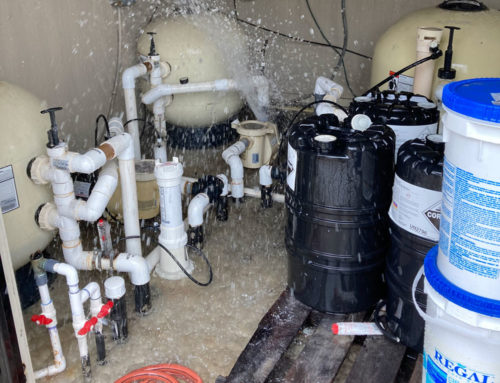Swimming has a rich and varied history in the U.S. From swimming holes in the countryside to full-fledged commercial facilities in city centers, there are many opportunities to go for a dip in modern America. However, this wasn’t always the case. Public pools were once precious commodities for the general populace, oases in sweltering cities that offered much-needed relief in the summer.
Amazingly, some of these facilities remain standing today. They’re a signal back to a time when swimming wasn’t just a skill to learn in childhood and put away for the rest of your life, but a great bit of entertainment that everybody could enjoy. Scattered around the country, and some barely resembling the forms they had at their heights, the most historic pools in the U.S. are evidence not only of unique pool construction techniques, but also of swimming’s enduring popularity throughout the ages.
The Plunge – Richmond, California
It’s official name is “The Richmond Municipal Natatorium,” but most residents refer it by it’s more popular nickname – The Plunge. Constructed in 1926, this pool joined the hundreds that dotted the Bay Area in the Roaring 20s, but over time, only the Plunge remained standing. The San Francisco Gate Chronicle explained that, as the other facilities moved or had to be shuttered due to financial constraints, the city of Richmond managed to keep the pool going well into the mid-20th century.
The 160-foot-by-60-foot pool was damaged in the 1989 Loma Prieta earthquake, and safety inspectors said that the structure was unsafe in 1997. Residents resisted the closing of one of the longest-running public facilities in not only Richmond but the entire country. Come 2001, however, the building was showing signs of its age, and city officials closed it for repairs.
Nine years later, though, the Plunge reopened. The money had been raised and the repairs completed, along with the addition of modern amenities like overhead LED lighting and high-efficiency water heaters.
“It’s like coming home,” June Albonico, a 83-year-old Richmond resident and Plunge enthusiast, told the SF Gate in a 2010 interview. Albonico took her first swim at the Plunge in 1932 – just six years after it opened. “When people come here, it’s almost like being part of a family.”
Deep Eddy Pool – Austin, Texas
After the Great Depression, so many people were out of work that the government initiated a massive series of public works projects just to get them back on their feet. Bridges were built, canals were dug and rivers were dammed up, but a little remembered fact from the era of the Works Progress Administration era is that it gave birth to a large number of pools as well.
Deep Eddy Pool is one of those facilities, though it has much humbler origins. Austin locals had used a convenient spot on the Colorado River for decades as a popular swimming hole. A large boulder in the stream created an eddy, a reverse current that forms when water flows around an obstacle. In 1915, a business man purchased the land and built a concrete structure around the swimming hole, as well as more amenities that would make up the regionally popular Deep Eddy Bathing Beach.
1935 brought two major changes to the Deep Eddy Pool – the city of Austin purchased it for $10,000 and, only two weeks later, the Colorado River flooded and destroyed most of the buildings surrounding the pool. Thanks to the WPA, though, the bathhouse and pool were quickly rebuilt, and those two structures have remained the same ever since.
Sutro Baths – San Francisco, California
You might have noticed a peculiar trend among historic pools. Not long after they’re built, a natural disaster might sweep all the infrastructure away, or old age causes serious structural defects. Fortunately, the Plunge and Deep Eddy Pool had the financial backing to rebuild. The Sutro Baths did not.
Built in 1894 by the self-made millionaire Adolph Sutro, the Sutro Baths served as a public bathhouse that sat right along the coast of the Pacific Ocean. By harnessing the power of the tides, the Sutro Baths generated enough power to pump the 1.7 million gallons of water the dozens of pools kept at varying temperatures within the complex required. At its height, the Sutro Baths could hold 10,000 patrons and had 20,000 bathing suits and 40,000 towels for rent.
In a familiar refrain that echoes modern struggles surrounding pools, the Sutro Baths were never financially successful. Attendance declined throughout the 20th-century until a fire destroyed what was left of the baths in 1966. Today, you can visit the ruins of the Sutro Baths, which were incorporated into Golden Gate National Recreation Area in 1973.





